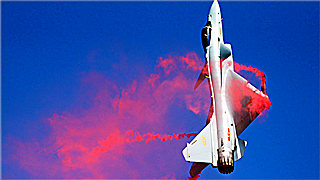
By Zhao Yan
The NATO’s biggest-ever joint military exercise dubbed Anakonda-2018 just kicked off in Poland. It is another large-scale joint military exercise conducted by the NATO countries in sensitive areas close to the northwestern border of Russia after the large-scale Trident Juncture exercise in Norway.
Analysts believe that, in addition to maintaining deterrence against Russia, this military exercise also helps explore measures to further deploy troops in Poland and the Baltic countries from the perspective of the NATO’s military deployment.
Distinctive features
The Anakonda-2018 military drill involves Baltic countries such as Estonia, Lithuania and Latvia for the first time. The exercise area includes military training grounds in Poland and the Baltic countries, as well as international airspace and waters of the Baltic Sea. Compared with the Trident Juncture, this drill is more sensitive as it directly faces the northwestern part of Russia and its sea hinterlands.
The drill will involve tens of thousands of troops from 10 NATO member states and NATO military commands. About 5,000 units of military hardware including 45 warships, 150 aircraft and helicopters will be involved in the maneuvers. The scale is bigger compared with previous drills.
The Polish side said that the drill aims to exercise the capability of the joint forces to carry out strategic defense tasks under conventional and mixed threat conditions. However, Chinese military commentator Hu Wenhan believes that, judging from its scale and content, the drill has offensive elements such as firepower tests and therefore is not a pure defensive exercise.
Multiple intentions
NATO has hosted Clear Sky air force drill in Ukraine, an aviation drill in the UK and the Trident Juncture drill in the past month. The main participating countries of Anakonda-2018 are Poland and the Baltic countries. Historically, those countries were the land and sea barrier around the Soviet Union in the West. They are close to Russia’s two strategically important cities of St. Petersburg and Kaliningrad. As a result, Russia is very dissatisfied with this drill.
During the Trident Juncture, two Tupolev Tu-160 strategic bombers of the Russian Aerospace Forces have made long air sorties over the drill area and were once followed by Norwegian fighter jets. Shortly afterwards, NATO carried out military exercises with a strong military force.NATO’s intention to strengthen its strategic deterrence against Russia is self-evident.
According to Hu, this military drill is also an exploration of NATO’stroop deployment. In recent years, Poland, as an important part of the US anti-missile system in Europe, has always aimed to strengthen its military cooperation with the US. Poland has repeatedly proposed the idea of permanently basing US troops within the country, despite paying out of its own pocket.
However, this has been strongly opposed by Russia and Belarus. During his visit to the US in September this year, Polish President Andrzej Duda brought up again the idea of the construction of a permanent military base in Poland. The US President Donald Trump said that he would consider this proposal “very seriously”.
Hu believes that the US may use the Anakonda-2018 military drill as an opportunity to explore the feasible plan of military deployment in Poland. At the same time, the US will promote the military deployment in the Baltic countries in different batches.
In addition, NATO said that it prepared some drill subjects that have not been publicly announced. During the drill, NATO will use that to test the official reaction and the level of military countermeasures on Russia’s part as a reference for its subsequent military operations.
Disclaimer: The author is Zhao Yan. The article was published on the PLA Daily on November 13. It is translated from Chinese into English and edited by the China Military online.










